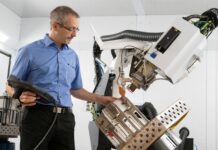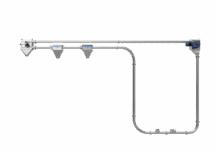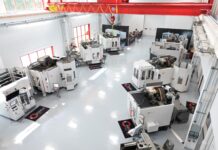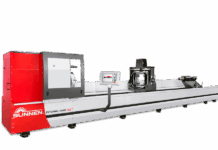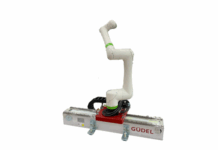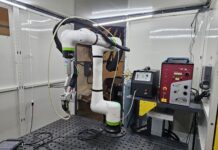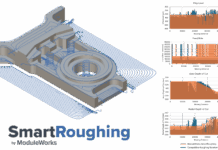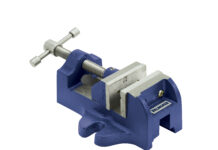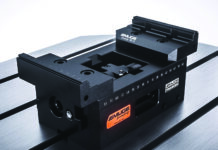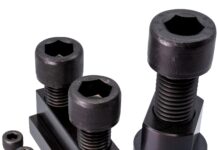HOW CLOUD DEPLOYMENT IS TRANSFORMING BUSINESS PROCESSES AND MAKING MANUFACTURERS DIGITAL-READY
Manufacturers are bombarded daily with promises of a digital revolution and system-wide reimagining. The potential can be jaw-dropping. One analyst predicts that connected, smart factories with their value-added service offerings could add between $500 billion and $1.5 trillion to the global economy in five years (Capgemini, 2017).
Such draw-dropping numbers and tantalizing technologies, including Augmented Reality and Artificial Intelligence, have captured the imagination of visionaries. But, the pragmatic manufacturer will look for proven tactics, the ones that will bring definable results and quickly offer a measurable Return on Investment (ROI). After years of economic quicksand, manufacturers are ready for some sure bets, fast wins, and high pay-offs. Additionally, a cash infusion may be necessary to set up long term visionary projects.
Here and Now
Separating futuristic promises from today’s hard reality can be a challenge. Successful manufacturing leaders, however, often possess a healthy balance of forward-looking insight and no-nonsense, get-it-done practicality. These results-driven manufacturers know the importance of going beyond the hype and examining core, foundational issues first. These may be process pains that have been a nuisance for years, but did not make it to the top of the priority list as personnel devised their own work-arounds and “made do” with inefficiencies.
For many manufacturers, fixing these fundamentals requires updating their ERP solution at the heart of their enterprise. On-premise upgrades are not always easy and many are now transitioning to cloud deployment. Cloud deployment provides enterprise-wide process improvements manufacturers need today and easier upgrades for tomorrow. Cloud deployment’s elasticity, and fast implementation are also critical elements of being digital-ready. Take a deeper look at why cloud deployment is the logical starting point for a short-term transformation, and long-term digital journey.
Keeping Pace Rapid Change
Manufacturers face escalating market pressures which change seemingly overnight. Trends come and go. Customer expectations evolve continuously. To respond, manufacturers may need to put in place regional divisions, leverage mergers and acquisitions, form partnerships, add distribution hubs, create new service branches, or build facilities to focus on high tech components or parts. These tactics require setting up new systems, hardware and software.
With the traditional on-premises approach, the IT department would be burdened with procuring and managing the hardware, servers, security, and back-up systems. Then, software for traditional on-premises systems can be time-consuming to implement, especially if the ERP is a generic one-size-fits-all, which needs to be tailored for an industry. These “old-school” approaches are no longer the most practical. Cloud deployment, in contrast, leaves the system set-up to the cloud provider, meaning the system is ready to go in days or weeks.

Storing Vast Amounts of Data
Legacy solutions deployed on-premises seldom offer the storage capacity needed for digital technologies, such as the volume of data generated through Internet of Things (IoT). IoT applications involve sensors embedded in products or equipment to capture and communicate a continuous flow of data about location and conditions. This requires the virtually unlimited storage capacity of the cloud. Trying to manage the massive amounts of sensor-generated data within your own on-premises system requires substantial investment in hardware—and people to manage the systems.
Visibility and Flexibility
Digital manufacturing is all about data, visibility, and access. It involves connecting to other systems, solutions, and even other devices, like shipping containers and material handling equipment. In order to be digital-ready the organization must have a core ERP that is flexible. That means getting rid of the cumbersome modifications that make updates and upgrades difficult. You need a system which can easily integrate and connect with other systems. In the past, ERP providers were concerned about keeping data within the organization, not in sharing.
Today, visibility must extend beyond the four walls of the plant to the supply chain network, colleagues, co-manufacturers, and partners. Turning to a modern ERP solution in the cloud makes this level of enterprise-wide connectivity easier.
Fully Modern Today, Fully Modern Tomorrow
A manufacturer with an outdated ERP solution is likely experiencing multiple pain points which are draining profits or making it difficult to keep up with the competition. Some may try to fix these issues, one at a time with add-on solutions. Trying to adapt a digital framework one edge app at a time is slow and inefficient. This piecemeal approach of adding sensors to one line or adding a portal feature for service orders may have had its place when early adopters were needing to prove digital concepts with pilot programs – but we are past that stage. Digital concepts are proven and beyond requiring protected boundaries to limit risk.
Now, it makes more sense to deploy system-wide improvements at once. That means starting with the ERP solution. No other tactic will be so far-reaching and offer you the ability to resolve multiple operational roadblocks all at once.
Perhaps one of the most substantial benefits of cloud deployment is that the manufacturer need not worry about upgrades and keeping the software modern. Cloud solutions are updated on a continual basis so that the software always contains the latest functionality.
Consistent Customer-Centricity
An enterprise-wide approach is also the most practical way to improve multiple customer touchpoints. It addressed the entire customer journey, not just order entry or field service dispatch. Customers engage with manufacturers at multiple levels, at many different intersection points in the buying cycle, from early product inquiries to aftermarket service and repeat sales or upgrades.
The customer expects a consistent experience throughout the process, not a highly attentive pre-purchase phase that suddenly drops off the moment the status switches from prospect to customer. With a new, advanced ERP solution in place, the customer experience will be consistently modern.
Manufacturers today are enticed by the exciting dazzle of disruptive technologies which promise big benefits. The manufacturer is also concerned about ROI, achieving early wins, and using proven methods for solving day-to-day operational pains. Deploying a modern ERP solution in the cloud takes care of both aspects. The cloud deployment offers the starting point for digital activities that are visionary and high impact, like IoT. The enterprise-wide advanced functionality of a modern ERP solution brings the very practical applications that the manufacturer needs now to be competitive and please customers.


